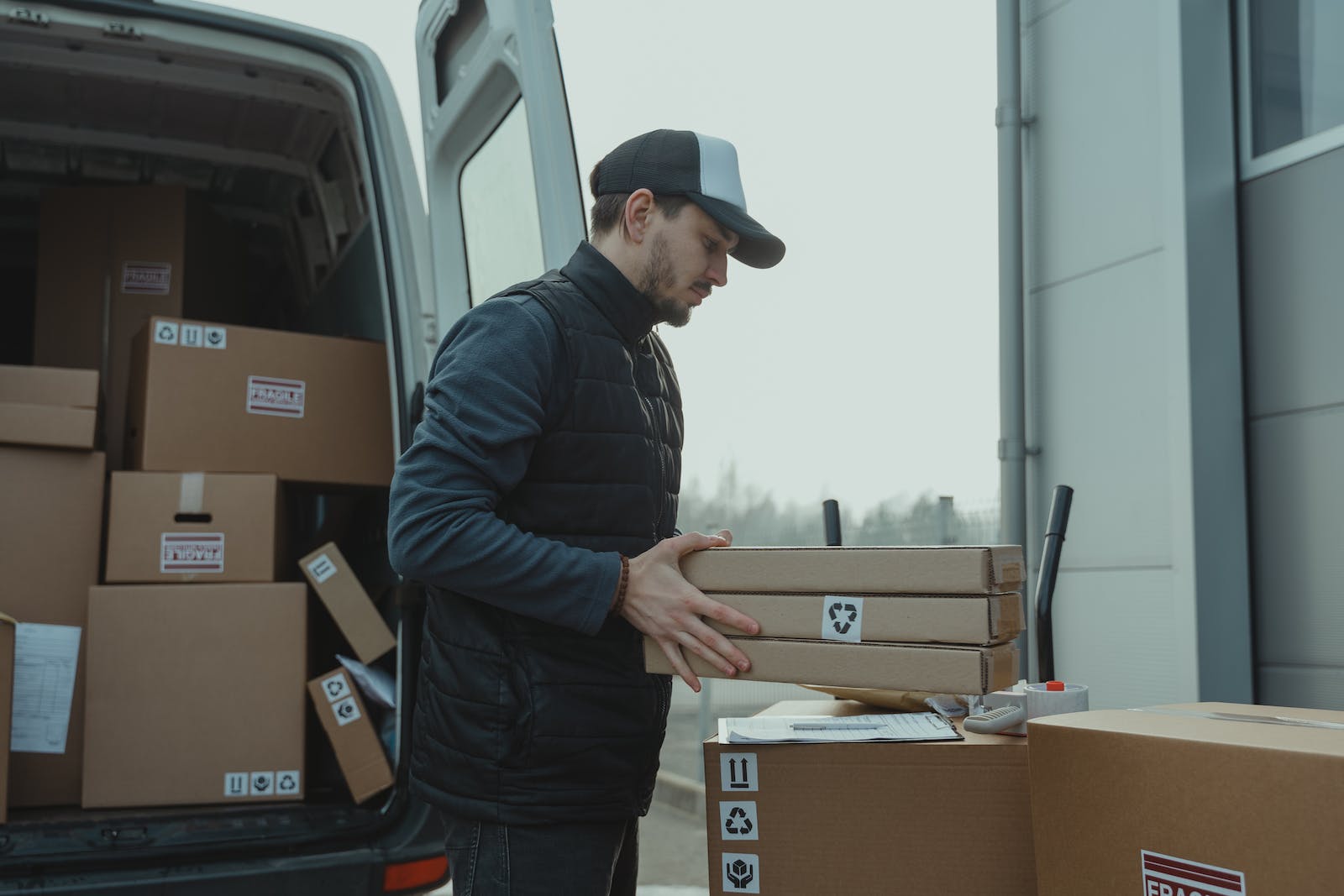Life wouldn’t be the same without parcel shipping. And while many may shake their head at such a seemingly exaggerated claim, the numbers don’t lie — UPS delivers 27 million packages per day, FedEx ships 10 million every day, and USPS sends out 4,900 pieces of mail per second. It’s the veritable spinal column of society.
Modern commerce wholeheartedly relies on the ever-present but often overlooked shipping powers provided by big-name carriers across the United States and beyond. Yet, the inner workings of parcel shipping processes, best practices, and future trends are shrouded in mystery, making it difficult for businesses to live up to constantly evolving customer demands.
Participants improve their chances of remaining competitive as time ticks on by unearthing the complexities and demystifying the sector.
What Is Parcel Shipping?
Parcel shipping is the backbone of everyday commerce. It’s a cost-effective, convenient, and utterly flexible method of transporting items from one business to another company or from an organization to its customers.
Broadly speaking, parcel shipping is split into domestic and international categories. The former transports goods within the country, while the latter extends beyond national borders.
Naturally, it is only a suitable method for some shipments. Parcels must meet these specifications to be eligible:
- Weight – Most carriers accept parcels that weigh up to 150 lbs. Items exceeding this weight generally fall into other shipping categories, like less-than-truckload (LTL shipping) or full truckload (FTL shipping).
- Size – Carriers’ policies indicate that parcels are packages whose girth plus length doesn’t exceed 165 inches.
- Packaging – Parcels are individually packaged in envelopes or boxes with the sender’s and recipient’s addresses/barcodes on the front.
Major Parcel Shipping Players
While at first glance, the parcel shipping provider industry seems to be incredibly saturated, each major player brings something different to the table, as shown below:
- United Parcel Service (UPS) – With a maximum weight limit of 150 lbs. and length of 108 inches, UPS is one of the primary services in the country. It’s adored by those looking to ship heavier, larger packages. When shipping high-value items, the carrier provides insurance coverage up to $50,000 for lost/damaged parcels.
- FedEx – Boasting operations in over 220 countries/territories, FedEx is one of the world’s largest parcel shipping providers. Its Ground and Home Delivery services have a 150lb weight limit. The company offers limited insurance, with affordable pricing for light and small packages. Its seven-day operation and express delivery make it a primary option among retail and commercial shippers.
- United States Postal Service (USPS) – Great for small-volume shippers requiring affordable pricing, USPS is commonly used by eCommerce retailers and small businesses sending orders domestically. The mail piece weight limit is 70 lbs., but its features (e.g., no residential or fuel surcharges) make it an attractive industry participant for businesses serving customers nationwide.
- DHL Express – As the largest logistics company in the world, DHL Express has a glorious track record in both the small parcel and freight shipping sectors. Customers can ship domestic and international orders with its services, paying based on the package’s weight and destination.
Small Parcel Shipping
The term “small parcel shipping” refers to sending one small package through a shipping carrier. The aptly named process deals with handheld parcels or packages that weigh less than 70 lbs. and aren’t palletized.
With this type of shipping, goods are packed into a box, poly mailer, or envelope, strapped with a shipping label, and handed off to the chosen carrier. Then, the carrier transports the package through its networks and sorts out last-mile delivery.
It isn’t suitable for every every shipment or business need. However, the following product/shipment types benefit from small parcel shipping:
- Items that can cope with a lot of movement
- Direct-to-consumer shipping
- Small, low-value goods
Common Carriers
USPS, UPS, and FedEx are the top carriers in the US offering domestic small parcel shipments. One isn’t necessarily better than the other, but they each specialize in different areas of the freight industry, as shown in the table below:
| USPS | UPS | FedEx | |
|---|---|---|---|
| Pricing | From $4.00 | From $7.00 | From $16.00 |
| Shipping Options | Overnight delivery Ground service Priority Mail | Overnight delivery 2-day delivery | Overnight delivery 2-day delivery Ground service |
| Features | Full tracking Limited insurance for Priority Mail Flat-rate shipping Cheapest for shipments under 1lb | Full tracking Every service comes with carrier liability Fastest ground service | Full tracking Provides business and niche shipments, such as frozen food |
But they aren’t the only service providers.
Regional small parcel carriers offer competitive rates and quicker delivery times for businesses with customers primarily from one area. By utilizing the following top service providers in their respective regions, businesses can cater to specific target markets more efficiently:
| Regional Carrier | Delivers To |
|---|---|
| Lasership | Connecticut, New York, New Jersey, Ohio, Florida, Virginia, Maryland, Pennsylvania, Georgia, Massachusetts, Michigan, North Carolina, Tennessee, Kentucky, and Indiana |
| Spee-Dee Delivery Service | Iowa, Illinois, Minnesota, Missouri, North Dakota, Nebraska, South Dakota, Wisconsin, and Michigan |
| CDL Last Mile Solutions | New York, New Jersey, Connecticut, Pennsylvania, Delaware, Washington DC, Maryland, and Virginia |
| OnTrac Shipping | Arizona, California, Colorado, Idaho, Nevada, Oregon, Utah, and Washington |
| US Cargo | Ohio, Pennsylvania, West Virginia, Southeast Michigan, Kentucky, and Indiana |
| United Delivery Services | Illinois, Indiana, and Wisconsin |
| Lone Star Overnight (LSO) | Texas, Louisiana, Kansas, Arkansas, and Missouri |
| Courier Express | Alabama, Florida, Georgia, North Carolina, South Carolina, Tennessee, and Virginia |
Pros and Cons
Small parcel shipping is a more than one-size-fits-all solution. Businesses must consider the following pros and cons before choosing the freight type:
| The Pros | The Cons |
|---|---|
| Easier to track with the right software Cheaper than freight shipping Various checkpoints provide increased visibility High volume delivery Economical for smaller shipments Several service levels offer maximum flexibility Convenient Ability to negotiate shipping rates Same-day small parcel shipments are less complex than freight shipments | Higher risk of damages, delays, and missing packages Some carriers charge additional fees for rural shipments, address changes, and weekend deliveries Can become costly if packages exceed the dimensional or weight requirements |
The Parcel Shipping Process
While each company has a distinct way of overseeing, performing, and managing operations, the general parcel shipping process remains unchanged.
The three overarching stages are as follows:
#1 Order Fulfillment and Packaging
Order fulfillment begins as soon as a customer’s order is received. Typically, companies use order management software to begin processing automatically.
Once initiated, the picking team/automated warehouse robots choose the items from the warehouse. The packing slip contains all the information needed to select the correct goods, including the SKUs, product colors, number of units, sizes, and warehouse location.
With the items selected, the packing team/automated fulfillment robots decide on packing materials. Their main goal? To achieve the lowest practical dimension weight while protecting the shipped goods. Not only does this accelerate transport, but it can also lower shipping costs.
#2 Labeling and Documentation
As soon as the packaging is complete, it’s labeled appropriately, ensuring vital information (i.e., the recipient’s address) is prominently displayed. “Handle with Care” and “Fragile Item” stickers may be applied depending on the parcel type.
But contrary to widespread belief, this isn’t where the paperwork ends.
Following labeling, professionals must prepare the necessary documents (e.g., custom declarations, invoices, bills of lading, etc.) to avoid legal battles and problems at border control.
#3 Carrier Selection and Shipping Options
At this stage, teams select the most feasible shipping method based on the parcel’s destination, delivery time slot, size, and weight. The broad options businesses can pick include ground, express, and international shipping methods. Most software allows a business to compare prices for shipping methods from major carriers based on residential addresses and other factors.
They must select and pay a carrier upon deciding on the shipping option. As mentioned earlier, the primary players include USPS, UPS, and FedEx.
After that, the package is delivered to the chosen carrier. It’s scanned upon entering the facility and into the carrier’s system for visibility and tracking purposes.
From there, the parcel ventures to its recipient.
Challenges in Parcel Shipping
The parcel shipping industry is no stranger to challenges. As the calendar hits 2024, these are the most pressing difficulties plaguing the sector:
Cost Management
The parcel shipping market is battling increasing complexities, such as rising fuel costs, high inflation, declining volumes, and labor shortages. With each difficulty, cost management is becoming much harder to fathom.
Companies must implement strategies that control expenses without limiting efficiency to better handle the complicated issues impacting business spending. The most effective include:
- optimizing packaging,
- streamlining shipping with automation and
- improving dimensional weights.
Shipping Timeframes
2022 saw major freight shipping delays due to the aftermath of countrywide lockdowns and international restrictions. By May, almost one-fifth of the container ship fleet around the world was stuck in congestion, according to a study by the Royal Bank of Canada. At its worst, the timeframe of shipping something from China to the US was 74 days longer than normal.
However, things began returning to normal in 2023. One report said only 21% of customers are experiencing increased package delays, and the same percentage of merchants remain impacted by shipping operations.
As of January 2024, the shipping industry has somewhat settled. But that doesn’t mean the timeframe challenge is over. Smaller packages can produce their own headaches for companies looking to earn a customer’s loyalty.
Consumers expect lightning-fast parcel shipping — an increasingly difficult (yet more important) aspect for companies to achieve. People are more likely to choose businesses with faster delivery times, so those who can’t keep pace with the sector will lose their place in the market.
Addressing Damages and Returns
Damages present headaches for delivery companies. They lead to complaints, cause returns, ruin reputations, and cost money. However, mishaps during transportation are bound to happen at one point or another. As such, businesses can only partially avoid this frustrating parcel shipping challenge. Instead, they need to focus on managing it.
Driver carelessness is one of the main reasons for damages. Therefore, companies must put specific procedures in place to handle and transport fragile items properly.
Best Practices for Efficient Parcel Shipping
Operating under the best practices outlined below will help businesses stay ahead of their competition.
Packaging Strategies
Businesses can save money and boost efficiency by following simple packaging strategies. These are the most popular:
- Choose the right-sized packaging to minimize costs. Eliminating unnecessary space and optimizing parcel dimensions prevent higher charges due to dimensions and decrease the risk of damage during transit.
- Remove excessive packing materials, like bubble wrap or filler, to reduce spend without compromising protection.
- Use flat-rate boxes for heavy or dense items. It’s a great way to save on shipping costs for certain parcels, but careful analysis is needed to maximize savings.
Rate Negotiation with Carriers
Attempting to negotiate carrier rates without an effective strategy isn’t the best course of action. Businesses must devise a plan that gives as much as it takes. The following tried and true strategies are particularly effective:
- Commit to long-term contracts — Establishing and nurturing relationships with carriers can make or break negotiations. Provided said relationship is built on trust, consistency, and reliability, carriers are more likely to offer favorable terms and rates.
- Leverage bundled services — Service bundles can offer opportunities to reduce costs for both sides of the negotiation.
- Off-peak discounts — This is a common negotiation tactic in the logistics industry. Off-peak discounts incentivize shippers to move freight during quiet times, lowering business rates.
Real-Time Tracking and Visibility
Implementing real-time tracking technology has quickly become a best parcel shipping practice due to heightened customer demands for complete transparency. For this to occur, however, data quality must be attained.
In this context, “quality” means it works for its intended use and is validated, timely, complete, and accurate. Providers with top-class data can trust their reports, KPIs, and analytics for faster opportunity uncovering, carrier performance comparing, and contract negotiating.
Innovations in Parcel Shipping
Innovations move quickly, but remaining abreast of technology, automation, and sustainability is the only way to stay ahead. As of early 2024, the following advancements have taken the sector by storm:
Technology Integration
The industry is seeing several technological integrations transforming how providers operate. Some of the most exciting are as follows:
- Predictive messaging that provides a one-hour window for courier deliveries
- Live tracking for parcels
- Using e-bikes and e-scooters for last-mile deliveries
- Advanced algorithms and analytics for better decision-making
Sustainability Initiatives
An OIG survey discovered that 56% of Americans are worried about the environmental impacts of deliveries, with 41% stating that environmental practices play a pivotal role when choosing a delivery company. As such, providers are implementing various strategies to increase the sustainability of their operations, such as:
- Reusable packaging
- Carbon compensation or other carbon offset program
- Optimized delivery routes
- Fuller delivery vehicles
Automation and Robotics
Both automation and robotics have made a massive impact on parcel delivery by streamlining deliveries and boosting the efficiency of integral processes like sorting, transporting, and delivering.
Robots and their integrated automation algorithms have exceeded expectations in the categorization and organization game. Modern systems make rapidly processing large parcel volumes possible while maintaining exceptional levels of accuracy. This innovation has greatly reduced the likelihood of lost freight shipments and human error delays.
Future Trends in Parcel Shipping
The innovations above are changing how professionals conduct parcel shipping, but these anticipated trends may have an even bigger impact.
Evolving Expectations
Aptly dubbed “the Amazon effect,” immediate gratification has become the norm among consumers and businesses. The retail giant has disrupted what people expect from online experiences thanks to features like “One-Click Ordering” and “Same-Day Delivery.” And people are only set to expect faster, cheaper shipping options as digitization progresses.
Parcel shippers must find ways to meet these ever-evolving expectations to remain profitable as this trend develops.
Technological Advancements
Artificial intelligence (AI), robotics, and self-driving are already shaping how parcel shipping works now. However, they are set to become even more advanced, paving the way toward entirely autonomous fleets, with UAVs (otherwise known as drones) leading the charge.
Predictive analytics and route optimization will likely become more effective, accurately analyzing weather conditions and real-time traffic information for unmatched efficiency in parcel transportation.
Sustainable Practices
The above-mentioned route optimization advancements will add environmental value to last-mile parcel deliveries, with propulsion technology likely swooping in to hike the sustainability of transportation.
Industry experts note the coming increase of cargo bicycles for inner cities. However, they quickly mention that said vehicles have limited load volumes and rely heavily on dense regional networks of micro-hubs. As such, most companies are expected to turn toward sustainable fuels and power their fleets with green electricity.
Beyond that, collaborative delivery networks are a future development. Involving cooperation between several companies to optimize resource usage and routes, such agreements can reduce emissions, improve overall urban sustainability, and decrease traffic congestion in built-up areas.
Parcel Shipping Bottom Line
Parcel shipping is cost-effective, flexible, and convenient for consumers and businesses alike. Without it, society as we know it would cease to exist. However, since the industry is essential in modern commerce, sector participants must adapt to emerging trends to keep pace and exceed ever-growing expectations.








